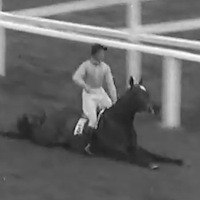Battle of Puebla (May 5, 1862)

On May 5, 1862, roughly 4500 Mexican farmers bonded together and defended their home against Napoleon III’s invading army. There was no help coming to them from the United States—the United States was in the midst of its own civil war. There were just themselves—untrained soldiers—to defend their land. But, how did they end up in this position and did their efforts make a difference?
To answer the question of “how,” here’s some history in a nutshell. September 16, 1821, Mexico liberated herself from Spain, thus gaining her independence. Soon after, however, instability within the government and several wars destroyed the economy. In fact, by 1860, the Mexican government found itself in debt to several countries.1 England, Spain, and France deployed armies to occupy Mexico and gain back the monies owed. The three forces took over the customs houses and intercepted the payments there to repay their debts. After some time, the Spanish and English governments made compromises with the Mexican government to pay back the monies owed and withdrew their troops. France, however, had a more sinister plan.2
America was in the midst of the Civil War. In France’s mind, this was the perfect opportunity to assist in crippling the young super power. By the mid-1800’s, the United States had already made quite an impact on the world. What better way to squelch the growth of the new nation then by insuring that it never reached maturity? In other words, if France could infiltrate and assist the Confederacy to the point of victory, then there would be two smaller nations instead of one large one.3
The only thing that lay between Napoleon III and the Confederacy of the United States was Mexico. His troops would have to defeat Juarez in order to gain entry into the Southern states to assist them. General Laurencez of France invaded Mexico from the gulf coast. He started in Veracruz and began the march to Mexico City. Near the forts at Guadalupe and Loreto, however, Laurencez met with resistance. Approximately 4500 strong in resistance. Laurencez, however, didn’t think much of the threat. After all, his troops numbered well over 6,000. He had nothing to fear. He ordered his men to march forward—straight through the middle of General Zaragoza’s men. The landscape of Puebla at the Guadalupe Hills was not exactly flat. Laurencez’s men “went through ditches, over adobe ruins and toward the slope of Guadalupe Hill. By then, the cavalry, exhausted and nearly disbanded, failed to achieve its goal.”4 Zaragoza, the general with no military experience, won.
That victory, however, was short lived. A year later, Napoleon III sent 30,000 troops to Mexico and this time, he did conquer. Setting Archduke Maximillian of Austria on the throne, France now controlled the country. The one thing that Napoleon hadn’t thought of, however, was assistance from the United States. As the American Civil War came to a close, Lincoln deployed American troops to assist Mexico in ousting the French.5 Cinco de Mayo honors those men who bravely fought impossible odds—who willingly sacrificed themselves for a greater good. Cinco de Mayo celebrates the rebirth of Mexican patriotism.
To answer the question of “how,” here’s some history in a nutshell. September 16, 1821, Mexico liberated herself from Spain, thus gaining her independence. Soon after, however, instability within the government and several wars destroyed the economy. In fact, by 1860, the Mexican government found itself in debt to several countries.1 England, Spain, and France deployed armies to occupy Mexico and gain back the monies owed. The three forces took over the customs houses and intercepted the payments there to repay their debts. After some time, the Spanish and English governments made compromises with the Mexican government to pay back the monies owed and withdrew their troops. France, however, had a more sinister plan.2
America was in the midst of the Civil War. In France’s mind, this was the perfect opportunity to assist in crippling the young super power. By the mid-1800’s, the United States had already made quite an impact on the world. What better way to squelch the growth of the new nation then by insuring that it never reached maturity? In other words, if France could infiltrate and assist the Confederacy to the point of victory, then there would be two smaller nations instead of one large one.3
The only thing that lay between Napoleon III and the Confederacy of the United States was Mexico. His troops would have to defeat Juarez in order to gain entry into the Southern states to assist them. General Laurencez of France invaded Mexico from the gulf coast. He started in Veracruz and began the march to Mexico City. Near the forts at Guadalupe and Loreto, however, Laurencez met with resistance. Approximately 4500 strong in resistance. Laurencez, however, didn’t think much of the threat. After all, his troops numbered well over 6,000. He had nothing to fear. He ordered his men to march forward—straight through the middle of General Zaragoza’s men. The landscape of Puebla at the Guadalupe Hills was not exactly flat. Laurencez’s men “went through ditches, over adobe ruins and toward the slope of Guadalupe Hill. By then, the cavalry, exhausted and nearly disbanded, failed to achieve its goal.”4 Zaragoza, the general with no military experience, won.
That victory, however, was short lived. A year later, Napoleon III sent 30,000 troops to Mexico and this time, he did conquer. Setting Archduke Maximillian of Austria on the throne, France now controlled the country. The one thing that Napoleon hadn’t thought of, however, was assistance from the United States. As the American Civil War came to a close, Lincoln deployed American troops to assist Mexico in ousting the French.5 Cinco de Mayo honors those men who bravely fought impossible odds—who willingly sacrificed themselves for a greater good. Cinco de Mayo celebrates the rebirth of Mexican patriotism.
You Should Also Read:
Hispanic Culture Site
Battle of Thapsus
Battle of Alcatraz

Related Articles
Editor's Picks Articles
Top Ten Articles
Previous Features
Site Map
Content copyright © 2023 by Christa Mackey. All rights reserved.
This content was written by Christa Mackey. If you wish to use this content in any manner, you need written permission. Contact Lane Graciano for details.







